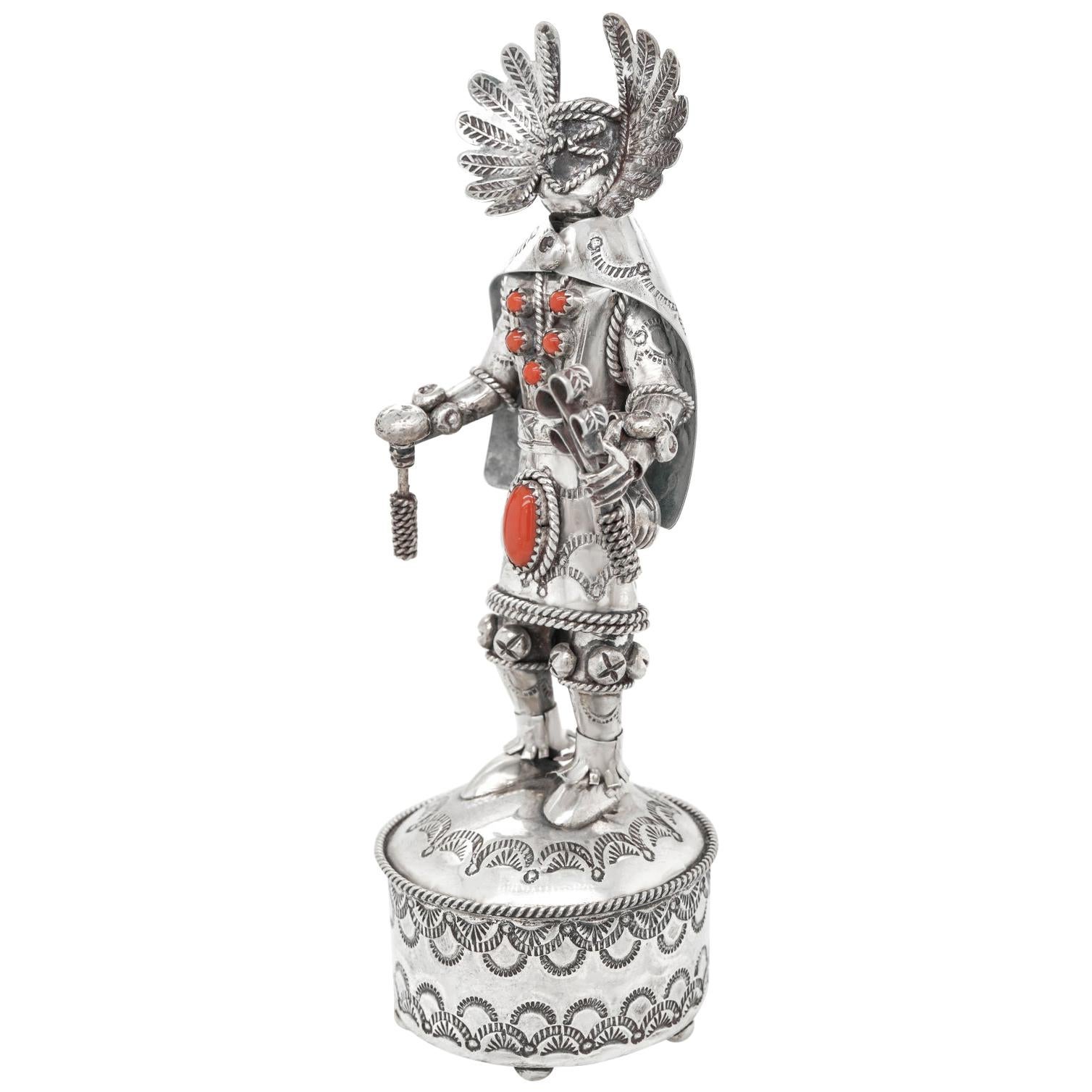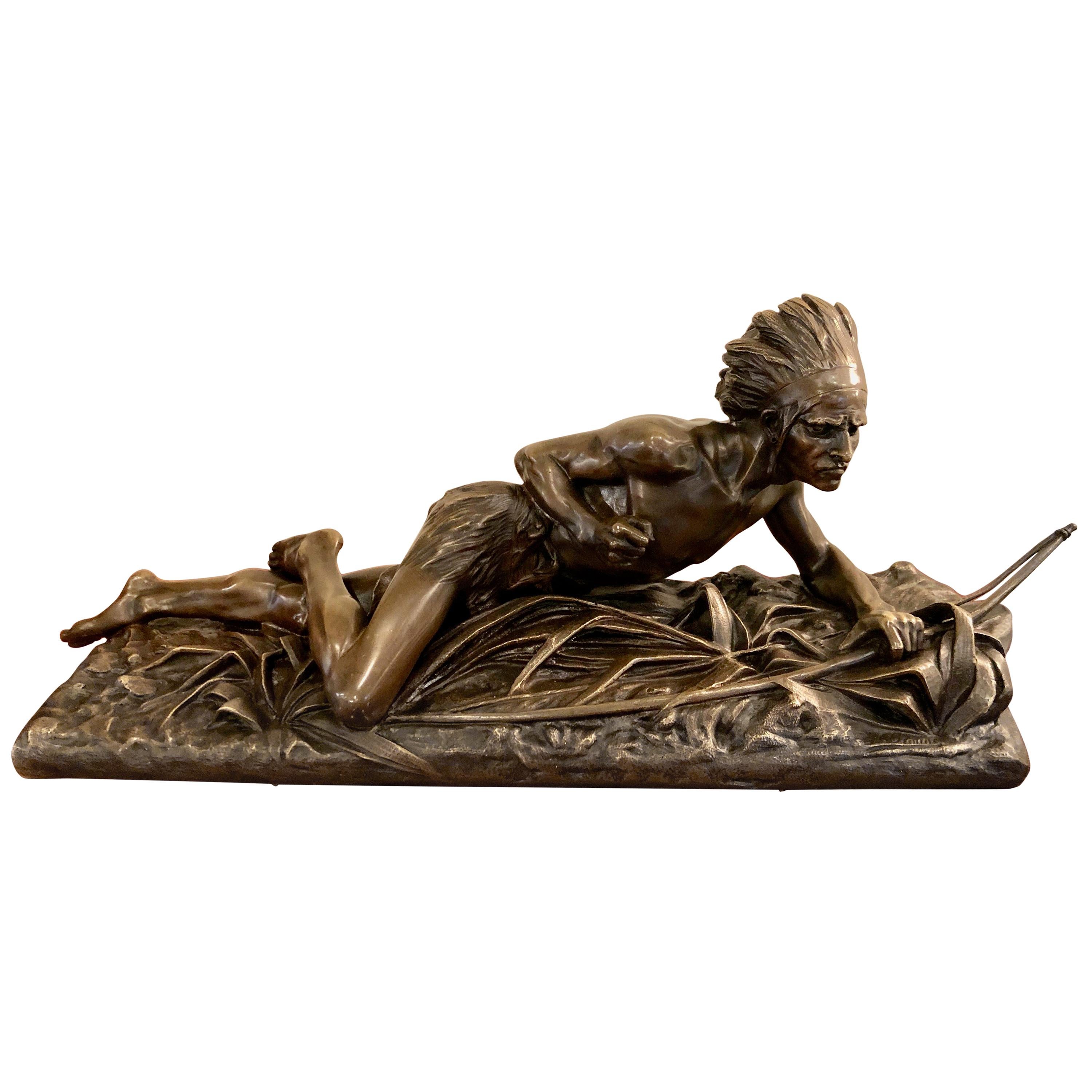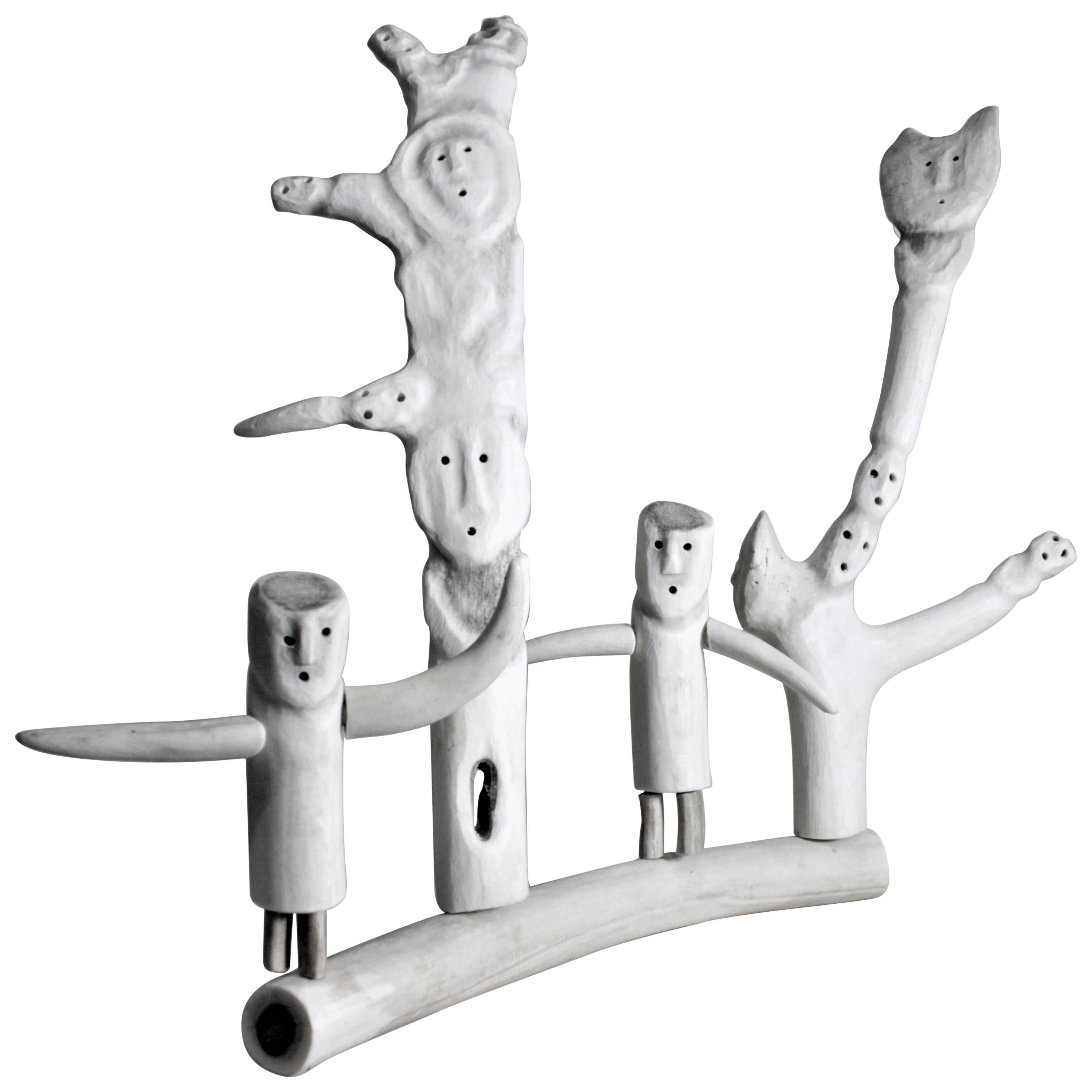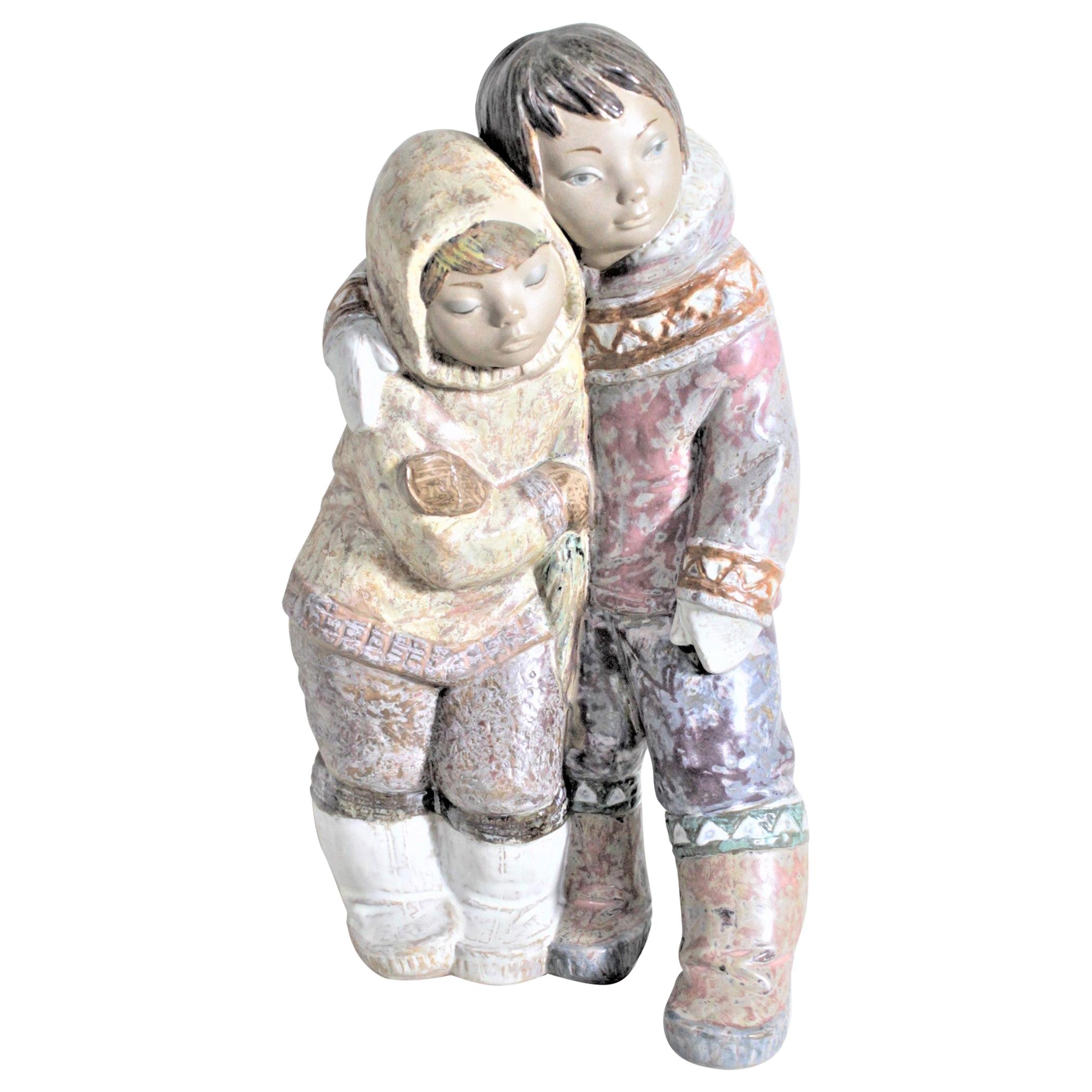Items Similar to America’s First “Spirit God” Ancestor
Video Loading
Want more images or videos?
Request additional images or videos from the seller
1 of 17
America’s First “Spirit God” Ancestor
About the Item
Pre-Columbian, Hispaniola, Arawak Peoples, Taino Native Indians, early 20th century or older
This is an ancestor sculpture from the Arawak Peoples of the Greater Antilles Islands.
Sometimes described to a broader category of Taino art called -zemis-. This term refers to the physical incarnation of a Taino god, spirit or ancestor. While the precise function of such objects remain somewhat a mystery- they continue to impress us with their bold abstract form and magical associations.
In the seminal book TAINO, Pre-Columbian Art and Culture from the Caribbean published by the El Museo del Barrio, these are discussed at length as private power-objects used in egalitarian tribes to later, large anthropomorphic depictions in public ritual to legitimize the hierarchical social structure of complex chiefdoms.
Rare Prominent Eye Socket and Decorative incised Hair Band
This remarkable sculpture of a zemi figure is carved in a seldom seen extended and arched high back form from a dark dense stone. This quintessential example has a large conically formed central raised point, a Zemi figure face which was meticulously hand pecked and incised with round deep-socketed eyes, prominent nasal cavities, wide open mouth, and lobed ears. On the back are finely incised stylized geometric motifs representing tattooing or scarification, adding to the impressive aesthetic presence of this piece. Some scholars find that zemis with their prominent pointed shapes relate to fertility myths.
A carving of this complexity, quality and size must have belonged to a chieftain -caciques- or ranking member of the royal household. Although Taino left no written documents, Spanish settlers did record native practices and one account refers to special structures in which chieftains stored their trove of zemi carvings. The Taino believed in existence of afterlife and Shamanic ability to communicate with the dead. This sculpture may well have been present and on display in such a ceremony or perhaps a focus of ancestor worship. This remarkably evocative work allows us to peak into ancient splendors of Taino civilization.
Dimensions: 10.5 inches high on our custom display stand and 7 inches wide and 5 inches deep, a heavy carving
Hand carved exhibiting dark original old patina from good age. An important and scarce work of art from America's Carribean islands.
Provenance: Old Florida collection.
Taino History:
The Taino flourished from 1200-1500.
When Columbus arrived in America, the first people he encountered were the Taino People- inhabitants of the islands of the northern Caribbean Sea, known as Hispaniola. They were Arawakan-speaking people who at the time of Christopher Columbus’s exploration inhabited Cuba, Jamaica, Hispaniola (Haiti and the Dominican Republic), Puerto Rico, and the Virgin Islands. Once the most numerous indigenous people of the Caribbean, the Taino may have numbered several million at the time of the Spanish conquest in the late 15th century.
Their highly developed belief system focused on zemi ancestor or god worship. A zemi was the physical manifestation of a god, spirit or ancestor. The chieftain -caciques- encouraged ancestor worship and were often deified after death. The religious leaders or shamans were thought to be able to communicate with the souls of the dead when intoxicated by the hallucinogenic cohoba. A preoccupation with death is evident in many Taino art-forms and partly explains the prevalence of zoomorphic images. Bats, owls and frogs were all popular motifs and were regarded as harbingers of life after death. The Taino believed that the dead could be reborn in animal form and some believe animals were their earliest ancestors in Taino creation myth. hence we find their zoomorphic sculptures as combinations of human and animal forms particularly provocative and great conversational art. The creator god was known as Yúcahu Maórocoti, encouraging growth of staple foods, like cassava. The goddess was Attabeira, who regulated and dominated over water, rivers, and seas.
Their contribution to the Spanish includes Indian corn, tobacco, rubber balls to unique art and artifacts, plus a new vocabulary. Importantly, the Taino lasting effects on Western civilization, though through brief contact, was an important and lasting one.
Lifetime guarantee of authenticity: All of our works of art come with our Lifetime Authenticity Guarantee.
- Dimensions:Height: 10.5 in (26.67 cm)Width: 7 in (17.78 cm)Depth: 5 in (12.7 cm)
- Style:Pre-Columbian (Of the Period)
- Materials and Techniques:
- Place of Origin:
- Period:
- Date of Manufacture:Early 20th Century
- Condition:Wear consistent with age and use.
- Seller Location:South Burlington, VT
- Reference Number:1stDibs: LU1289218761742
About the Seller
5.0
Gold Seller
These expertly vetted sellers are highly rated and consistently exceed customer expectations.
Established in 1990
1stDibs seller since 2015
2,214 sales on 1stDibs
Typical response time: 1 hour
- ShippingRetrieving quote...Ships From: South Burlington, VT
- Return PolicyA return for this item may be initiated within 7 days of delivery.
More From This SellerView All
- Early American Plains Stone Buffalo Hunting TalismanLocated in South Burlington, VTNative America Plains hand-carved and hand-painted stone Buffalo Hunting Talisman in the form of a buffalo hoof with human effigy head and tail , granite, 1800-1900 Dimensions: 12 inches high and 9.5 inches wide, Provenance: old mid west collection Hand-carved with great old paint and patina an authentic old work of art that is likely unique Lifetime guarantee of authenticity: All of our works of art come with our lifetime authenticity guarantee. Our gallery has been dealing in authentic Native...Category
Antique 19th Century American Native American Objects
MaterialsGranite
- Native America Antique Hand Carved Granite Human HeadLocated in South Burlington, VTFrom Native America comes this unique ancient hand carved granite stone head head effigy, attributed to the Yokuts People. It was collected on a private ra...Category
Antique 19th Century American Native American Objects
MaterialsClay
- Native America Ancient Hand Carved Stone Kachina Effigy SculptureLocated in South Burlington, VTFrom Native America Southwest comes this unique ancient hand carved stone "Kachina" sculpture, Chaco culture, Farmington, New Mexico region. ...Category
Antique 15th Century and Earlier American Native American Objects
MaterialsStone
- Ancient American "Human Effigy" Stone Pipe, Woodland PeriodLocated in South Burlington, VTEarly American Pre-Historic Human Effigy stone pipe, woodland period, 2500 BP Formerly in the Harold French collection, Amboy, Indiana (photo) All st...Category
Antique 15th Century and Earlier American Native American Objects
MaterialsStone
- American "Human Effigy" Female Stone Sculpture, Tennessee, 1000 ADLocated in South Burlington, VTA Native American Human Effigy female statue, Holliston Mills Site, Tennessee , sandstone, circa 1000 AD Dimensions: 11.75 inches tall and 3.75 inches width 5.75?D, fine quality All stone carvings from America's Prehistoric past are scarce. The majority of known carved stones come from the far western Mimbres, Hohokam or Casas cultures. This sculpture is unique. Quality: fine original condition with varigated patina as found. Notice the detail of the carved ear spools...Category
Antique 15th Century and Earlier American Native American Objects
MaterialsSandstone
- Native America Old Natural Stone Human Head Effigy SculptureLocated in South Burlington, VTFrom Native America Southwest comes this unique natural stone "human head" effigy. It was discovered in the Tesuque area of New Mexico in 1960. It is a natural sandstone concretion...Category
20th Century American Native American Objects
MaterialsSandstone
You May Also Like
- Navajo Sterling Spirit Dancer by Tobey HendersonLocated in Litchfield, CTThis spectacular sterling figure of a Navajo spirit dancer by renowned Navajo silversmith Toby Henderson is highly detailed, circa 1980s, by Toby Henderson, Dine-Navajo, American. Heavily worked and excessively concha stamped, it is the perfect way to connect with the spiritual world through Dine art! Excellent condition. Remarks: "Bring the balance of self and universe into your home." Size: 5 1/2 inches high by 2 inches wide Weight: 88.7 grams Hallmarks: TH below a partial sun, maker's mark for Tobey...Category
Vintage 1980s North American Native American Native American Objects
MaterialsSterling Silver
- Navajo Sterling Spirit Dancer by Toby HendersonLocated in Litchfield, CTBy Toby Henderson, Dine-Navajo, American, circa 1980s. This spectacular sterling figure of a Navajo spirit dancer by renowned Navajo silversmith Toby Henderson is highly detailed. Heavily worked and excessively concha stamped, it is the perfect way to connect with the spiritual world through Dine art! Excellent condition. Remarks: "Bring the balance of self and universe into your home." Size: 5 5/8 inches high by 2 inches wide Weight: 91.5 grams Hallmarks: TH below a partial sun, maker's mark for Tobey Henderson...Category
Vintage 1980s American Native American Figurative Sculptures
MaterialsSterling Silver
- Edouard Drouot Original Bronze American Indian HuntingBy Edouard DrouotLocated in Oakland, CAIndian bronze signed E. Drouot. Cast with plenty of detail depicting an Indian man who is on the look out while holding a bow in hunting position. Drouot did multiple sculptures rend...Category
Vintage 1920s French Art Deco Figurative Sculptures
MaterialsBronze
- Large Hand Carved Inuit Stylized Figurative SculptureLocated in Hamilton, OntarioThis handcrafted sculpture was made in Northern Canada by an Inuit artisan in circa 1970. This sculpture is a series of two stylized human figures intermixed with two representations of presumably Spirits, which has several carved faces in them. The entire sculpture is composed of hand carved and handcrafted antler, likely Caribou. This sculpture may symbolize a blessing of good fortune for an upcoming hunt. The series of four figures are each pegged on the bottom and fit into holes drilled into the base. The base is numbered on the bottom which identifies that it was registered, and also has a paper label. Due to the composition of this sculpture it may only be shipped within Canada...Category
Late 20th Century Canadian Native American Native American Objects
MaterialsAntler
- Large Lladro Yupik or Inuit Boy and Girl Affectionately Embracing FigurineBy LladroLocated in Hamilton, OntarioThis very large hand painted porcelain figurine was made by the renowned Llladro company of Spain in circa 1985. The figurine depicts a young Inuit boy and girl affectionately embrac...Category
Late 20th Century Spanish Native American Native American Objects
MaterialsPorcelain
- Large Lladro Yupik or Inuit Girl Sitting Cross Legged Figurine or SculptureBy LladroLocated in Hamilton, OntarioThis very large hand painted porcelain figurine was made by the renowned Llladro company of Spain in approximately 1985. The figurine depicts a young Inuit girl seated cross legged w...Category
Late 20th Century Spanish Native American Native American Objects
MaterialsPorcelain
Recently Viewed
View AllMore Ways To Browse
Furniture Of America
Antique America
America Antique
American Antique
Antique Furniture America
Antique American Furniture
America Antique Furniture
American Antique Furniture
American Dimensions
Antique Early American Furniture
Early American Antique Furniture
American Motif
Early American Folk Art
New American Folk Art
Large American Folk Art
Spirit Eye
Western American Indian
Antique Native American Objects





